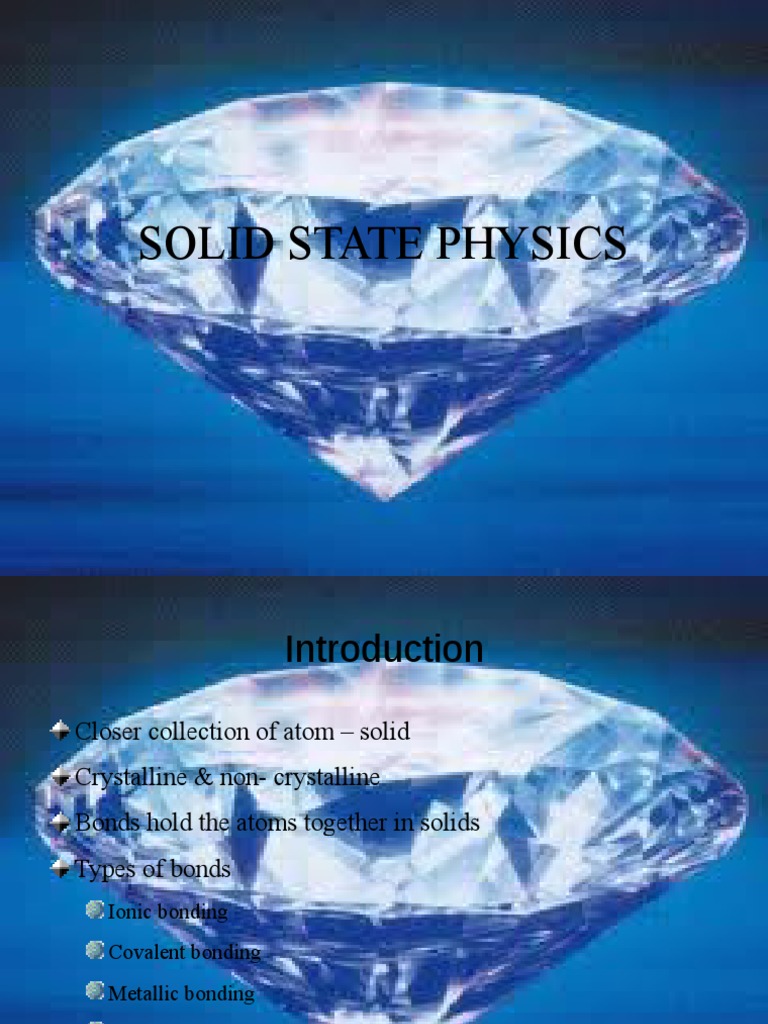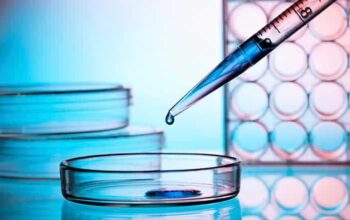Is solid state physics useful for biophysicists? At first glance, one might ponder the relevance of crystallography and materials science to the world of molecules and biological systems. Yet, the interdependence of physics, chemistry, and biology forms a tapestry rich in inquiry and innovation. This article elucidates the critical intersections where solid state physics informs and enhances the realm of biophysics, ultimately posing a challenge to biophysicists to engage with concepts historically associated with materials rather than living systems.
To appreciate the significance of solid state physics in biophysics, we must first delineate the fundamental principles that govern materials at the atomic and molecular levels. Solid state physics primarily concerns the study of condensed matter—solids and liquids—in which atoms are closely packed together. This discipline provides insights into the electronic properties, structural properties, and interactions within materials. On the other hand, biophysics examines biological phenomena through the lens of physics, focusing on processes at the molecular scale, such as protein folding, DNA interactions, and macromolecular dynamics. The cross-pollination of these fields presents a plethora of opportunities for biophysicists.
One major area where solid state physics contributes to biophysics is in the development of novel biomaterials. Understanding the crystalline structures of materials allows for the design of scaffolds used in tissue engineering. For instance, solid state physics principles elucidate how different crystal forms affect the mechanical properties and biological compatibility of a material. This knowledge is indispensable when creating synthetic tissues that can mimic natural biological environments, thereby facilitating cellular growth and function.
Moreover, the study of semiconductor materials, rooted in solid state physics, has revolutionized the biomedical field. The advent of biosensors, which employ semiconductor technology, allows for the real-time monitoring of biological processes. For example, field-effect transistors (FETs) can be modified to detect specific biomolecules through changes in their electrical properties. This intersection of material science and molecular biology exemplifies how a robust understanding of solid state physics can lead to groundbreaking advancements in biotechnological applications.
Another intriguing aspect is the role of solid state physics in elucidating biomolecular interactions. Techniques derived from solid state principles, such as X-ray diffraction and neutron scattering, are paramount for determining the structures of complex biomolecules. These methods reveal how proteins fold and assemble, providing crucial insights into their functionality. Such insights are not merely academic pursuits; they possess profound implications for drug design and the development of therapeutic interventions.
The biophysical exploration of molecular dynamics also benefits from solid state physics. Computational simulations, often rooted in solid state theoretical frameworks, offer predictive models for biomolecular behavior. Using methodologies like molecular dynamics simulations enables researchers to visualize how large biomolecules interact under various environmental conditions. This predictive capacity facilitates the identification of potential drug targets by highlighting the dynamic nature of binding sites, which is paramount in rational drug design.
Yet, herein lies a challenge for biophysicists: the integration of solid state physics into the traditional scope of biological research demands a broader perspective. Biophysicists are often deeply entrenched in biological themes, sometimes neglecting the underlying physical principles germane to their studies. By embracing solid state physics, they open themselves to a diverse array of methodologies and analytical techniques that can yield new understandings of biological systems.
One playful question arises: how can biophysicists straddle the seemingly disparate worlds of molecules and materials? The answer lies in collaborative interdisciplinary efforts. Biophysicists can forge partnerships with physicists specializing in solid state phenomena, fostering a dialogue that enhances both disciplines. This collaboration could lead to the development of hybrid methodologies that combine physical principles with biological applications, ultimately yielding groundbreaking research outcomes.
Moreover, emerging fields such as nanotechnology exemplify the confluence of solid state physics and biology. Understanding the properties of nanomaterials, which are governed by solid state physics, equips biophysicists with tools to manipulate biological processes at the nanoscale. Whether for targeted drug delivery systems or novel imaging techniques, the potential applications of nanotechnology in biophysics are vast and profound.
In conclusion, the intersection of solid state physics and biophysics offers fertile ground for innovation and inquiry. By recognizing the relevance of materials science in molecular biology, biophysicists can expand their repertoire of methodologies, leading to novel insights and applications. The interplay between materials and molecules not only enriches our understanding of biological systems but also poses an exciting challenge to future researchers: to embrace the synergies between these two fields and harness their collective power to unravel the complexities of life at the molecular level. As the boundaries between materials and molecules continue to blur, the potential for groundbreaking discoveries awaits those bold enough to venture across disciplinary divides.










